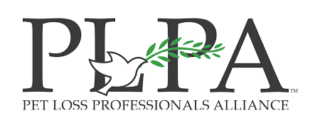This is Part 4, Step 2 of our Support Protocols for 14 Common Situations series. The cases described in this series are drawn from everyday scenarios found in general veterinary practice or emergency and specialty practices. Below you’ll find an example of a type of case you’re likely to encounter in practice. This blog’s subject is a case involving client-present euthanasia. Due to the complexity of this situation, this topic has been divided into three separate blogs: Step 1, Step 2, and Step 3. If you haven’t read the first blog, go back and read Step 1 before reading Step 2.
Implement Support Techniques (Step 2)
 Use of a Catheter
Use of a Catheter
If clients have elected to be present, the use of a catheter is highly recommended. A catheter is not a sign that you doubt your own skill. The truth is that, even if you hit a vein 99 percent of the time, there are times when fate goes against you. If you have to poke several times for a vein, animals naturally begin to pull away from you. Clients often interpret this movement as their companion animal’s way of struggling to stay alive. They may even feel that you are needlessly hurting their pet.
- If you decide to use a catheter, the animal should be taken briefly to a treatment room. The catheter is then placed in the animal’s rear leg. This placement allows clients to be near the pet’s head while you are performing the procedure. If you are concerned about the added cost of using catheters for euthanasia, you can place non-sterile, previously used ones. You might explain this aspect of your technique by saying, “The first thing I will do to prepare for Buddy’s euthanasia is to take him to the treatment area. I will shave a small area of fur on one of his rear legs, and place an intravenous catheter. The use of a catheter simply means that I can make the necessary injections more smoothly.” Placing vet wrap around the catheter and possibly a heart sticker can soften the look of the catheter.
- Sometimes the veins of very old or ill cats cannot be catheterized. If a deviation in technique occurs, it’s important that you explain it to clients and prepare them for any consequences that may arise.
Review Protocol
Even though you may have already explained your euthanasia protocol to your clients during a decision-making consultation, review the steps again before you begin the procedure. During client-present euthanasia, it’s not unusual to have friends and family members present who have not yet heard your description of what is about to happen. Reviewing the protocol allows everyone present to hold similar expectations.
Client-Present Euthanasia Injection Series
Over the past several decades, clinical experience has proven that, when clients are present, using a series of injections may be preferable to using a single euthanasia solution. This series often includes:
- a saline flush to test the catheter
- a barbiturate, such as thiopental, to relax the animal
- the euthanasia solution, usually pentobarbital sodium
Using a drug combination like this seems to minimize side effects, making the animal’s death as peaceful and painless as possible.
Making three injections is another reason to use a catheter. You can explain why you are repeatedly injecting an animal by saying something like, “The euthanasia method I prefer to use involves three injections. The first is a saline solution flush. This tells me that the catheter is working. The second is a barbiturate, which places Buddy in a soothing state of relaxation. The third injection is the euthanasia solution. This injection will actually stop Buddy’s heart, brain activity, and other bodily functions, and ultimately cause his death. His death will take place within a matter of seconds.”
Preparing the Client
Even though this recommended euthanasia technique usually minimizes any possible side effects, they can still occur. Therefore, you should let the client know that these effects might be pat of the euthanasia experience. You can do this by saying something like, “You should also know that, although my technique is designed to eliminate them, there may be some side effects of the drugs. For instance, Buddy may urinate, defecate, twitch or even sigh a bit after he dies. He will not be aware of any of this, though, and he will not feel any pain. In addition, Buddy’s eyes will most likely remain open. Muscles close our eyes, and once death has occurred, Buddy will not have use of these muscles.”
Before you begin the injections, tell the clients that you are about to begin and allow them time to say a final, heartfelt goodbye or to gather their pet in their arms. Keep in mind that anxiety is usually high just prior to and during euthanasia. Sometimes owners have momentary episodes of panic. If this happens, it is best for you to halt the procedure and attend to your client’s emotions before continuing. You can say something like, “This is always the most anxious and difficult moment, but we have all decided this is best for Buddy. Let’s take a deep breath and say goodbye one more time.”
It goes without saying that, if clients become adamant about stopping the procedure, it should be stopped, if it is still medically possible to do so. In the many years of our clinical experience, though, we have heard of very few practitioners who have ever encountered this situation.
During the Client-Present Euthanasia
Once the procedure has begun, inject the drugs quickly, with little or no lapse of time between them. As they are injected, tell your clients what you are doing so they are kept abreast of how the procedure is progressing. For example, you might say, “I am injecting the first solution, the saline flush, to make sure the catheter I have inserted is working properly.” Once that has been done, the next might be announced by saying, “Now I am giving Buddy a barbiturate that will make him sleepy and help drift off and relax. “When it is time for the last injection, you might say, “No I am injecting the final drug.”
Aside from these statements, it’s best for you to remain silent. Most owners want to focus on saying goodbye to their animal. Comments, questions, and chatter may be distracting to their concentration.
While you are injecting the animal, be discreet with needles and syringes. (Keep them in a pocket of a laboratory coat or a smock and return them there after each injection is completed.) The sight of needles cause great anxiety for some clients. Be sure they are not within reach of children who are present.
Pronouncing Death
This method of facilitating euthanasia usually goes so quickly and smoothly that most owners don’t realize when their pets have actually died. It is important, then, to use a stethoscope to listen for a final heartbeat. This visible act reassures pet owners that their companion animal has truly died. After listening for a heartbeat, the animal should also be pronounced dead. You should do this by gaining direct eye contact with your client and stating in a clear, soft voice, “Buddy has died.” Push yourself to use the word “died” or “dead,” as euphemisms can be confusing for clients at this time. With our pronouncement, clients may gasp, cry, or sigh with relief. They may make remarks about how quickly death came and about how peaceful the experience was.
Large Animals
Do not assume that owners of large animals do not wish to be present at their companion animal’s euthanasia. The bond between humans and their horses, llamas, or cattle, for example, can be as strong as the bonds humans share with smaller animals. While there are techniques you can use, such as catheter extension tubes or knock-down stalls, to minimize them, side effects are more common with large animals than with small ones. Their bodies may collapse suddenly to the ground, for example, or they may make involuntary movements or take agonal breaths after the death has occurred. Clients should be well informed about what they might witness and, once educated, should be allowed to choose their own level of involvement.
After Euthanasia
After death has occurred, reassure the client about their decision to euthanize the animal. You might say, “Buddy’s illness had gotten to the point where you could no longer help him medically. Helping him die peacefully and painlessly was the humane and correct thing to do. You prevented him from suffering needlessly.” You can also express your own feelings of affection for the pet. For example, you might say, “I’m going to miss Buddy, too. He always wagged his tail for me.” These statements may then prompt a spontaneous review of the pet’s life, with pet owners sharing their special stories with you.
After euthanasia, some clients want to leave the site quickly, while others need more time alone with their pet. Whenever possible, accommodate the client’s needs. Don’t assume that a client wants to be alone with the pet’s body. Always ask your clients what they prefer.
If a client wishes to spend more time with their pet’s body, this is a good time to make a clay pawprint, or even hoofprint, of the animal. When clients can take a personalized keepsake like this home with them, they may feel a bit better about leaving the pet’s body behind with you. If clients wish to leave quickly, you can still make a pawprint and present it when they return to pick up the pet’s cremains.
That’s it for implementing support techniques. When you’re ready, be sure to read the Client-Present Euthanasia: Situational Support Protocols Step 3 blog for the final steps of the protocol.
Keep up the good work,

Laurel Lagoni
Co-Founder
World by the Tail, Inc.





